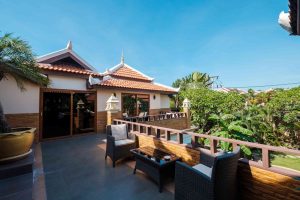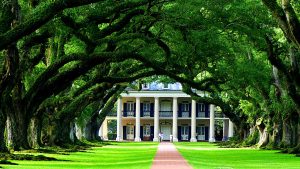Bali, known for its lush landscapes, stunning beaches, and vibrant culture, has become a hub for both tourists and developers alike. As the island experiences a rise in construction projects, from eco-luxury resorts to private villas and community buildings, the importance of sustainable building practices has never been more pressing. With Bali’s unique ecosystem, local traditions, and the growing environmental awareness among both residents and visitors, it’s essential that construction projects utilize materials that not only minimize their carbon footprint but also integrate seamlessly with the island’s natural beauty. Sustainable construction materials offer a way to achieve this delicate balance, providing solutions that are both eco-friendly and durable, while preserving the island’s tropical charm.
In 2024, more and more projects are embracing materials that are renewable, locally sourced, and energy-efficient, aligning with Bali’s vision of becoming a leader in sustainable tourism and development. Whether it’s harnessing the power of bamboo, utilizing recycled materials, or incorporating innovative new products like hempcrete or mycelium, these sustainable materials are shaping the future of construction in Bali. In this article, we’ll explore the 10 Best Sustainable Materials for Construction Projects in Bali, showcasing how each one is contributing to a greener, more sustainable Bali without compromising on design or functionality.
10 Best Sustainable Materials for Construction Projects in Bali

As Bali continues to attract tourists, expats, and entrepreneurs, the demand for construction projects is ever-growing. However, with this development comes the responsibility to ensure that building practices are environmentally sustainable, in line with Bali’s natural beauty, and harmonious with the island’s cultural values. Sustainable construction materials are crucial for minimizing environmental impact, reducing carbon footprints, and creating energy-efficient structures that can withstand Bali’s tropical climate. The use of eco-friendly building materials not only preserves Bali’s rich heritage and biodiversity but also offers long-term cost savings and durability.
In 2024, a range of innovative materials are being utilized for construction projects across the island, making sustainable building practices more accessible and effective than ever. Below, we explore the 10 Best Sustainable Materials for Construction Projects in Bali, offering a glimpse into how these materials are being used to create buildings that blend seamlessly with nature while promoting environmental consciousness.
1. Bamboo: The Eco-Friendly Marvel

Bamboo is a versatile, renewable resource that has become a symbol of sustainability in Bali’s construction landscape. Known for its fast growth, low environmental impact, and strength, bamboo is often used for building everything from residential homes to eco-lodges and public structures.
- Benefits:
- Rapidly renewable (can grow up to 1 meter per day).
- Stronger than steel in tensile strength.
- Requires minimal processing, reducing energy consumption.
- Can withstand Bali’s humid, tropical weather conditions.
- Applications: Bamboo is ideal for framing, roofing, flooring, walls, and even furniture in eco-conscious homes or resorts.
2. Rammed Earth: Natural Strength and Durability

Rammed earth construction, using compacted layers of natural soil, provides a highly sustainable and energy-efficient building material. In Bali, it is gaining traction due to its low environmental impact and ability to regulate indoor temperatures naturally.
- Benefits:
- Locally sourced, reducing transportation emissions.
- Provides natural insulation, keeping buildings cool during Bali’s hot days and warm at night.
- Highly durable and fire-resistant.
- Low maintenance and offers a rustic aesthetic that blends well with natural surroundings.
- Applications: Often used for walls, foundations, and even floors in eco-friendly villas and resorts.
Also read: 10 Best Light Installations in Bali to Know in 2025
3. Recycled Wood: Upcycled Elegance

Recycled wood is a sustainable material that provides a sense of rustic elegance while reducing the need for new timber. Using reclaimed wood from old buildings, furniture, or scrap materials allows construction projects to reduce waste and preserve valuable forests.
- Benefits:
- Reduces the demand for logging, helping to preserve forests.
- Gives new life to old wood, often with unique grains and textures.
- Low carbon footprint, especially if sourced locally.
- Offers a warm and natural aesthetic to interiors and exteriors.
- Applications: Ideal for flooring, decking, furniture, wall panels, and roofing.
4. Coconut Husk (Coir) and Coconut Wood: Bali’s Local Resource

Coconut husks and coconut wood are sustainable materials that are both abundant and incredibly versatile in Bali. These by-products of the coconut industry are being repurposed for construction and interior design, reducing waste and providing long-lasting, eco-friendly solutions.
- Benefits:
- Coir is a strong fiber used for insulation, carpets, and flooring.
- Coconut wood is naturally resistant to pests and water, making it perfect for outdoor furniture and structures.
- Both materials are biodegradable, unlike synthetic alternatives.
- Low environmental impact, as they are sourced locally and are a byproduct of coconut farming.
- Applications: Coir for insulation, flooring, and mats; coconut wood for furniture, roofing, and decorative elements.
5. Hempcrete: The Insulating Green Building Material

Hempcrete, made from the hemp plant, is a biodegradable and highly sustainable alternative to traditional concrete. It’s lightweight, non-toxic, and offers excellent insulation properties, making it ideal for Bali’s warm and humid climate.
- Benefits:
- Insulates naturally, reducing energy consumption for cooling.
- Absorbs carbon dioxide, acting as a carbon sink.
- Fireproof and mold-resistant.
- Easy to work with and non-toxic to humans.
- Applications: Ideal for walls, insulation, and floor slabs in eco-friendly homes and resorts.
6. Bali Stone (Volcanic Stone): Locally Sourced and Durable

Bali’s volcanic stones, such as andesite, are commonly used in traditional Balinese architecture and construction due to their durability, aesthetic appeal, and local availability. These stones are not only a cultural symbol but also a sustainable material for modern construction projects.
- Benefits:
- Locally sourced, reducing transportation emissions.
- Highly durable and weather-resistant, ideal for Bali’s tropical climate.
- Beautiful natural finishes, adding to the aesthetic value of buildings.
- Low maintenance and long-lasting.
- Applications: Used for flooring, walls, patios, and landscaping features, especially in villas, resorts, and temples.
7. Recycled Steel: Reducing Waste, Increasing Strength

Recycled steel is a sustainable alternative to newly produced steel, which requires high energy consumption. By reusing scrap metal, recycled steel contributes to reducing waste while maintaining the strength and durability of the material.
- Benefits:
- Strong and long-lasting, providing structural integrity to buildings.
- Reusing steel helps conserve natural resources and reduces energy consumption.
- It can be easily recycled again at the end of its life cycle.
- Corrosion-resistant and low maintenance.
- Applications: Used in structural frameworks, reinforcements, roofing, and even furniture.
8. Solar Panels: Harnessing Bali’s Abundant Sunlight

Solar panels are a renewable energy source that can make buildings more energy-efficient by harnessing the power of the sun. In Bali, where sunlight is abundant, integrating solar panels into construction projects is a sustainable choice that aligns with the island’s eco-conscious building trend.
- Benefits:
- Reduces reliance on grid power, cutting down electricity costs.
- Low maintenance and long lifespan (typically 25 years).
- Reduces carbon footprint by using renewable energy.
- Can be integrated seamlessly into rooftops or even as part of building facades.
- Applications: Solar panels can be installed on roofs of homes, resorts, and even community buildings to generate electricity.
Also read: Top 10 Interior Design Trends in Bali You Need to Know for 2024
9. Mycelium: The Mushroom-Based Building Material

Mycelium, the root structure of fungi, is being explored as a new sustainable building material. It is an organic material that can be grown into molds, creating bricks and insulation with minimal environmental impact.
- Benefits:
- Fully biodegradable and non-toxic.
- Strong and lightweight, with great insulation properties.
- Minimal energy required for production, as it grows naturally.
- Can be cultivated locally, reducing transportation emissions.
- Applications: Can be used for wall panels, insulation, and as a substitute for concrete in lightweight structures.
10. Straw Bale: A Natural Insulator

Straw bale construction is a centuries-old building technique that is gaining renewed attention due to its affordability and sustainability. Straw bales are highly insulating, making them perfect for maintaining comfortable indoor temperatures without relying on artificial heating or cooling.
- Benefits:
- Great thermal insulation, reducing the need for air conditioning.
- Biodegradable and non-toxic.
- Made from agricultural waste, which is often abundant in Bali.
- Affordable and easy to work with for builders.
- Applications: Used for walls, roofs, and even for creating eco-friendly homes or small community structures.
Karyanusa Asia: Creating Sustainable Bali Construction Projects with Eco-Friendly Materials

Karyanusa Asia is at the forefront of transforming Bali’s construction industry by integrating sustainable materials into the design and building processes. As the demand for eco-conscious development grows across the island, Karyanusa Asia stands as a key player in promoting the use of environmentally friendly materials that not only reduce the ecological impact but also enhance the aesthetic appeal and longevity of the structures.
The company’s approach is based on a deep understanding of Bali’s unique environment, cultural heritage, and the need for modern, sustainable solutions that respect both. By collaborating with local artisans and leveraging cutting-edge technology, Karyanusa Asia ensures that each construction project aligns with the principles of sustainability, offering long-term benefits for the island’s development. Some of the ways in which Karyanusa Asia contributes to sustainable construction projects include:
- Use of Renewable and Locally Sourced Materials: Karyanusa Asia prioritizes the use of renewable materials such as bamboo, recycled wood, and coconut products, all of which are locally sourced in Bali. This reduces the carbon footprint associated with transportation and ensures that the materials are in harmony with the island’s natural surroundings.
- Energy-Efficient Design: Karyanusa Asia specializes in creating energy-efficient buildings by incorporating natural insulation and climate-responsive designs that minimize the need for artificial heating or cooling. This ensures that the buildings remain comfortable throughout Bali’s tropical climate while reducing energy consumption.
- Waste Reduction through Recycled Materials: By utilizing recycled steel, reclaimed wood, and even upcycled materials like glass and plastic, Karyanusa Asia helps reduce construction waste and promotes a circular economy. These practices prevent valuable materials from ending up in landfills and help conserve natural resources.
- Innovative and Eco-Friendly Technologies: Karyanusa Asia embraces innovative construction technologies such as hempcrete, mycelium-based materials, and sustainable concrete alternatives, which have minimal environmental impact and offer superior durability. These materials not only reduce the carbon footprint of construction but also offer excellent insulation properties, making buildings more energy-efficient.
- Cultural Sensitivity in Design: Understanding the importance of preserving Bali’s cultural identity, Karyanusa Asia ensures that all construction projects are designed with local architectural traditions in mind. By combining modern sustainable techniques with Balinese design principles, the company creates structures that are both eco-friendly and culturally appropriate.
- Collaboration with Local Communities: Karyanusa Asia works closely with local communities and artisans, creating job opportunities and promoting the use of traditional building methods alongside modern sustainable practices. This approach helps preserve Bali’s craftsmanship while contributing to the local economy.
By integrating these sustainable practices, Karyanusa Asia is not only enhancing the beauty and functionality of Bali’s built environment but also setting a benchmark for eco-conscious construction in the region. Their commitment to using sustainable materials and practices ensures that Bali’s future development will align with the island’s environmental goals, creating spaces that are not only environmentally friendly but also socially responsible and economically viable.
Conclusion
In conclusion, the shift toward sustainable construction practices in Bali is not only an essential response to the growing demands of development but also a profound commitment to preserving the island’s natural beauty and cultural heritage for future generations. By incorporating sustainable materials, such as bamboo, recycled wood, hempcrete, and mycelium, Bali’s construction industry is embracing a vision of eco-conscious growth that prioritizes the environment without compromising on the quality or aesthetic appeal of the buildings. These materials not only reduce the carbon footprint of construction projects but also support local industries, promote biodiversity, and reduce waste, creating a harmonious balance between modern development and nature.
The beauty of Bali lies not just in its landscapes but also in its people, traditions, and the deep connection to the environment that locals and visitors cherish. By adopting sustainable materials, developers and builders are making a positive contribution to Bali’s ongoing legacy—ensuring that the island remains a place of inspiration for generations to come. Furthermore, as the demand for eco-friendly, energy-efficient structures rises globally, Bali stands at the forefront of integrating innovative materials that enhance the island’s eco-tourism appeal while meeting the needs of modern living.
As more construction projects incorporate these sustainable building practices, Bali’s reputation as a global leader in environmentally conscious design continues to grow. The materials discussed in this article offer a glimpse into the future of construction, where sustainability and design excellence go hand in hand. Ultimately, Bali’s future will depend on the collective effort to build responsibly and ethically, and embracing these sustainable materials will be key in shaping a greener, more resilient island for the years ahead. By making these thoughtful choices, developers, architects, and builders are paving the way for a Bali that continues to inspire, protect, and nurture the environment, while providing innovative and sustainable solutions for the ever-growing demand for development.





